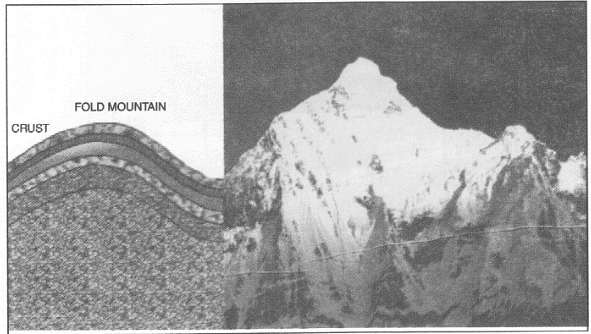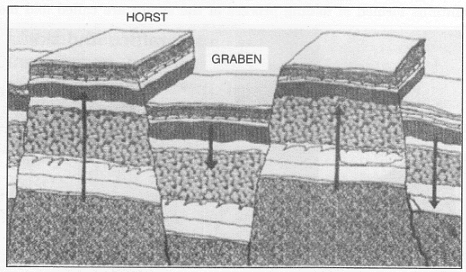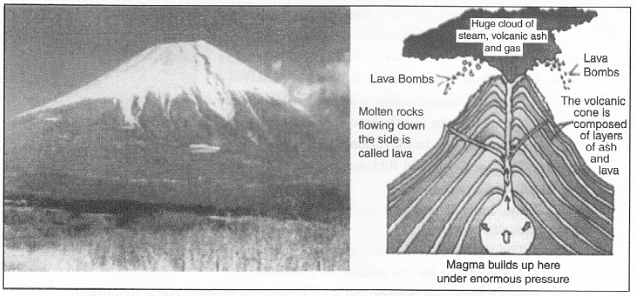Class 5 SST HOTS Questions - Major Landforms
Q1: What are the two processes?
Ans: The two processes are:
(i) Internal Processes: lead to
- Upliftment of the earth’s surface.
- Sinking of the earth’s surface.
(ii) External Processes: are the processes which continuously
- wear down the surface.
- rebuild the surface.
Q2: What are erosion and deposition?
Ans:
Erosion:
- Wearing down of the earth’s surface is called erosion.
- Erosional process lowers the surface.
Deposition:
- Rebuilding of earth’s surface is called deposition.
Q3: Define (i) Mountains (ii) Glaciers.
Ans:
- Mountains are natural elevations of the earth’s surface with a small summit and a broad base, higher than the surrounding area.
- Glaciers are permanent moving heaps of ice and snow.
Q4: What are mountain ranges? Give some examples of mountain ranges.
Ans: Mountains, arranged in a line are called mountain ranges.
Examples:
- The Himalayas (India—Asia)
- The Alps (Europe)
- The Andes (South America)
- The Rockies (North America)
Q5: Describe three types of mountains.
Ans: Three Types of Mountains:
1. The Fold Mountains
- Mountains formed of folding process of the strata are called fold mountains

The Himalayas and the Alps are young fold mountains.
- They have rugged relief.
- They have high conical hills.
Aravallis in India are old fold mountains.
- They are considerably worn down by the processes of erosion.
Appalachians in North America and Urals in Russia have rounded features.
- They are low in elevation.
- They are very old fold mountains.
2. Block Mountains
- When large areas are broken and displaced vertically, block mountains are created.
- The uplifted blocks are termed as horsts.
- Lowered blocks are named as graben.
- Rhine valley and Vosges are good examples of such block mountains.
Some more examples of this type of mountains/landforms:
- Rift valley of Narmada and Tapi
- Deccan Plateau
- Meghalaya Plateau
- Drakeusburge (in South Africa)
- Australian Plateau
- Saudi Arabian landforms
- African Tableland.

3. Volcanic Mountains
- Volcanic activity leads to the formation of volcanic mountains.
- Examples of volcanic mountains:
- Kilimanjaro Mountains (in Africa).
- Mt. Fujiyama (in Japan).

Q6: What are plateaus? Give their major features.
Ans:
Plateaus: Plateaus are flat topped tableland with steep slopes on one side or more sides.
Features of the Plateaus:
Height varies from a few hundred metres to several thousand metres.
- Plateaus may be young or old.
- Deccan Plateau of India is one of the oldest plateaus of the world.
- Other examples: East African Plateau (in Kenya, Tanzania and Uganda). Western Plateau of Australia.
- The Tibet Plateau is the highest plateau of the world with a 4000 to 6000 metres above mean sea level.
Q7: How are plateaus useful to us?
Ans: Usefulness of Plateaus:
- Rich in mineral resources/deposits.
- Numerous mining areas are located in the plateau areas:
- African plateau is known for gold and diamond mining.
- Chhotanagpur plateau in India is rich in iron ore, coal and manganese.
- Plateaus have several waterfalls, ideal sites for generation of hydro electricity:
- Hundru falls in Chhotanagpur Plateau on River Subernarekha.
- Jog falls in Karnataka.
- Lava plateaus rich in black soil are ideal for cultivation.
- Some plateaus are known for scenic spots and they are great attractions to tourists.
Q8: Describe the relationship between landforms and people.
Ans:
Landforms and People:
People live on different landforms in different ways:
- Life is difficult in mountains.
- Plains are major attractions for people.
- In plains it is easy to build houses, construct roads, raise crops.
- In mountains earthquakes, volcanic eruptions etc. cause huge damage to life and property.
Some people misuse landforms:
- They use land as waste like constructing house on fertile land.
- They throw garbage on land and in water making them polluted.
Q9: Define plains. Describe their major features.
Ans: Plains:
Definition - Plains are large stretches of flat land, not higher than 200 metres from mean sea level
- Some are extremely level.
- Others are rolling and undulating.
Major Features of Plains:
- Mostly formed by river deposits.
- Plains are generally fertile.
- They are thickly populated.
- They have dense network of roads and railways.
- Agriculture is the main occupation of the people.
Examples:
- Ganga-Indus-Brahmaputra Plains in India.
- Yangtze Plain in China.
Q10: Why do lesser people live in mountain areas?
Ans:
Lesser people live in mountain areas because of the following reasons:
- Less land is available for farming because of steep slope.
- Harsh climate.
|
33 videos|264 docs|50 tests
|
















